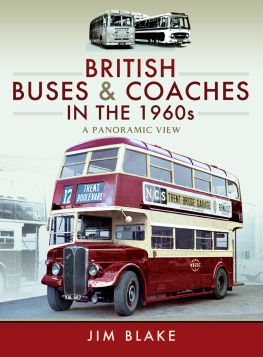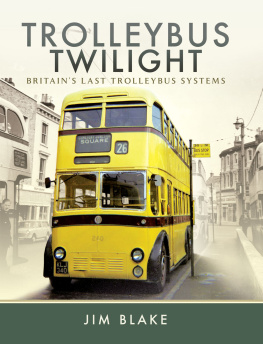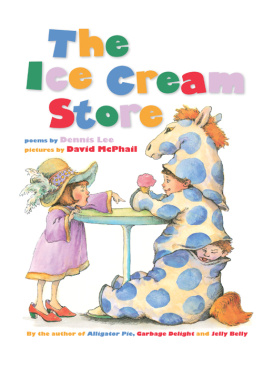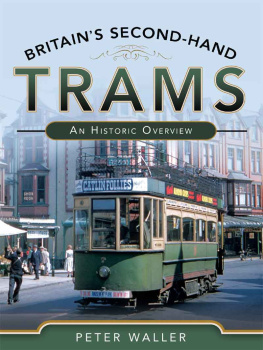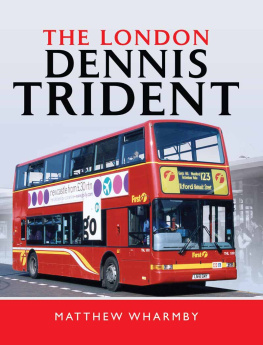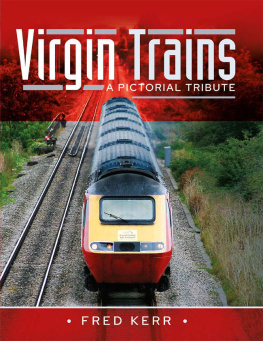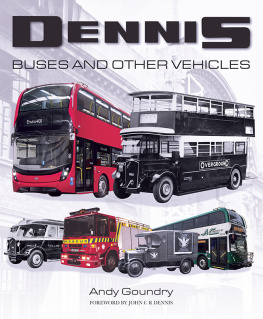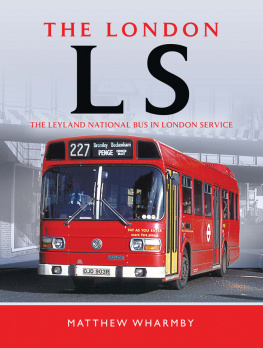
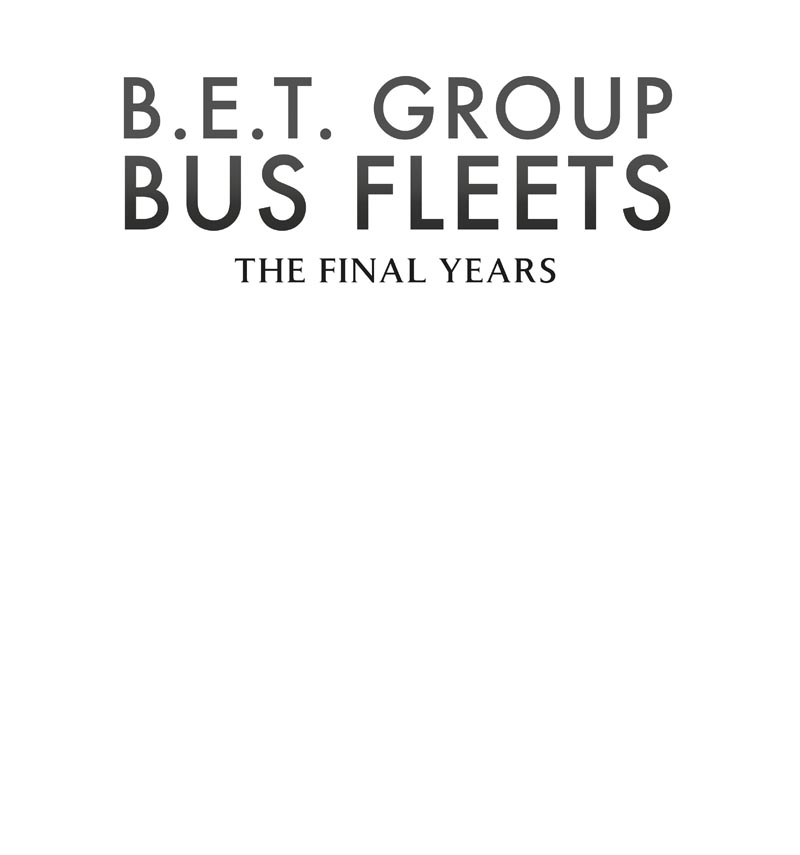
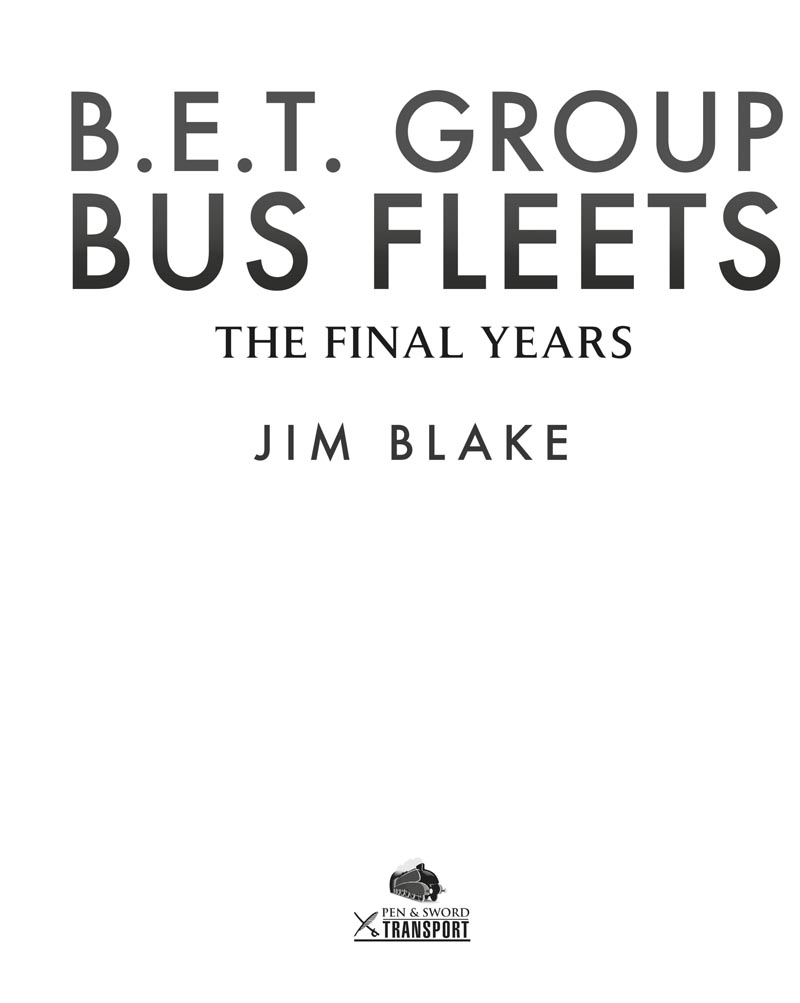
Published in 2017 by
Pen & Sword Transport
an imprint of
Pen & Sword Books Ltd
47 Church Street
Barnsley
South Yorkshire
S70 2AS
Copyright James Blake, 2017
ISBN 9 781 47385 726 1
The right of James Blake to be identified as the Author of this Work has been asserted by him in accordance with the Copyright, Designs and Patents Act 1988. A CIP catalogue record for this book is available from the British Library
All rights reserved. No part of this book may be reproduced or transmitted in any form or by any means, electronic or mechanical including photocopying, recording or by any information storage and retrieval system, without permission from the Publisher in writing.
Typeset by Matthew Wharmby
Printed and bound
Pen & Sword Books Ltd incorporates the imprints of Pen & Sword Archaeology, Atlas, Aviation, Battleground, Discovery, Family History, History, Maritime, Military, Naval, Politics, Railways, Select, Transport, True Crime, and Fiction, Frontline Books, Leo Cooper, Praetorian Press, Seaforth Publishing and Wharncliffe.
For a complete list of Pen & Sword titles please contact
PEN & SWORD BOOKS LIMITED
47 Church Street, Barnsley, South Yorkshire, S70 2AS, England
E-mail: enquiries@pen-and-sword.co.uk
Website: www.pen-and-sword.co.uk
CONTENTS
ABOUT THE AUTHOR
I was born at the end of 1947, just five days before the Big Four railway companies, and many bus companies including London Transport were nationalised by Clement Attlees Labour government.
Like most young lads born in the early post-war years, I soon developed a passionate interest in railways, the myriad steam engines still running on Britains railways in those days in particular. However, because my home in Canonbury Avenue, Islington, was just a few minutes walk from North Londons last two tram routes, the 33 in Essex Road and the 35 in Holloway Road and Upper Street, my parents often took me on these for outings to the South Bank, particularly to the Festival of Britain which was held there in the last summer they ran, in 1951. Moreover, my father worked at the GPOs West Central District Office in Holborn and often travelled to and from work on the 35 tram. As a result, I knew many of the tram crews, who would let me stand by the driver at the front of the trams as they travelled through the Kingsway Tram Subway. This was an unforgettable experience for a four-year-old! In addition, my home was in the heart of North Londons trolleybus system, with route 611 actually passing my home, and one of the busiest and most complicated trolleybus junctions in the world Holloway, Nags Head a short ride away along Holloway Road. Here, the trolleybuses overhead almost blotted out the sky! Thus from a very early age, I developed an interest in buses and trolleybuses which was equal to that of my interest in railways, and I have retained both until the present day.
I was educated at my local Highbury County Grammar School, and later at Kingsway College, by coincidence a stones throw from the old tram subway. I was first bought a camera for my 14th birthday at the end of 1961, which was immediately put to good use photographing the last London trolleybuses in North West London on their very snowy last day a week later. Three years later, I started work as an administrator for the old London County Council at County Hall, by coincidence adjacent to the former Festival of Britain site. I travelled to and from work on bus routes 171 or 172, which had replaced the 33 and 35 trams mentioned above.
By now, my interest in buses and trolleybuses had expanded to include those of other operators, and I travelled throughout England and Wales between 1961 and 1968 in pursuit of them, being able to afford to travel further afield after starting work. I also bought a colour cine-camera in 1965, with which I was able to capture what is now very rare footage of long-lost buses, trolleybuses and steam locomotives. Where the latter are concerned, I was one of the initial purchasers of the unique British Railways Pacific locomotive 71000 Duke of Gloucester, which was the last ever passenger express engine built for use in Britain before the end of mainline steam construction in 1960. Other preservationists laughed at our group which had purchased what, in effect, was a cannibalised hulk from Barry scrapyard at the end of 1973, but they laughed on the other side of their faces when, after extensive and innovative rebuilding, it steamed again in 1986. It has since become one of the best-known and loved preserved British locomotives, often returning to the main lines.
Although I spent thirty-five years in local government administration, with the LCCs successor, the Greater London Council, then Haringey Council and finally literally back on my old doorstep, with Islington Council, I also took a break from office drudgery in 1974/5 and actually worked on the buses as a conductor at London Transports Clapton Garage, on local routes 22, 38 and 253. Working on the latter, a former tram and trolleybus route, in particular was an unforgettable experience. I was recommended for promotion as an inspector, but rightly thought that taking such a job with the surname Blake was unwise in view of the then-current character of the same name and occupation in the On The Buses TV series and films, and so declined the offer and returned to County Hall!
By this time, I had begun to have my transport photographs published in various books and magazines featuring buses. I had also started off the North London Transport Society, which catered for enthusiasts interested in the subject. In conjunction with this group, I have also compiled and published a number of books since 1977, featuring many of the 100,000 or so transport photographs I have taken over the years.
Also through the North London Transport Society, I became involved in setting up and organising various events for transport enthusiasts in 1980, notably the North Weald Bus Rally which the group took over in 1984; it has raised thousands of pounds for charity ever since. These events are still going strong today.
In addition to my interest in public transport, I also have an interest in the popular music of the late 1950s and early 1960s, in particular that of the eccentric independent record producer, songwriter and manager Joe Meek. In Joes tiny studio above a shop in Holloway Road (not far from the famous trolleybus junction) he wrote and produced Telstar by The Tornados, which became the first British pop record to make No.1 in America, at the end of 1962, long before The Beatles had even been heard of over there! When Joe died in February 1967, I set up an Appreciation Society for his music, which is still going strong today. His music has a very distinctive sound.
I also enjoy a pint or two (and usually more) of real ale. I have two grown-up daughters, Margaret and Felicity, and three grandchildren, Gracie, Freddie and Oscar, at the time of writing. I still live in North London, having moved to my present home in Palmers Green in 1982.
INTRODUCTION
D uring the 1960s, the BET (British Electric Traction) group of bus companies operated approximately half of the inter-urban and rural bus services in England and Wales. This group was semi-nationalised, having been affiliated to the four main line railway companies prior to their absorption within British Railways in 1948. At this period, the operators within the group had a wide variety of vehicle types, encompassing virtually all chassis and body makes then to be seen in service, and were also well-known for their distinctive, traditional liveries. In addition to the bus companies, there were also some coach-only operators within the group, for example Black & White of Cheltenham who were a central part of the Associated Motorways group which ran express services throughout the country, and Timpsons of Catford, South London, who ran coastal express services. As the 1960s drew to a close, the fascinating array of vehicle types was rapidly being depleted as newer, standardised one-man-operated vehicles replaced the older ones, whilst following its acquisition by the nationalised Tilling Group (Transport Holding Company) in November 1967, the BET group became part of the National Bus Company in early 1969, and before long the operators distinctive liveries too became just a memory.
Next page

